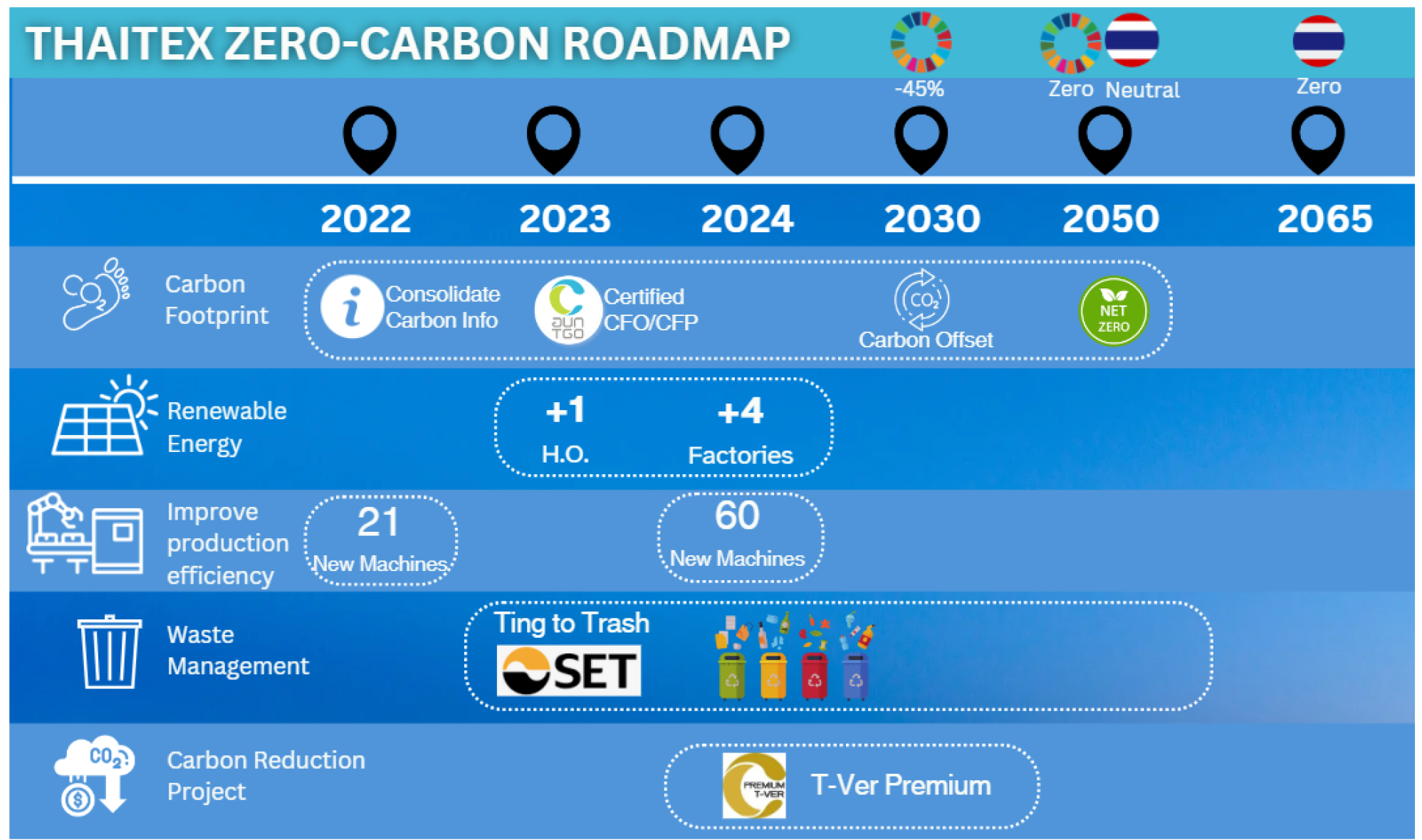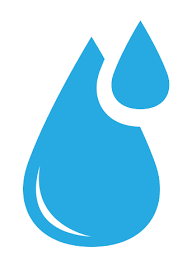ENVITONMENTAL POLICY

Thai Rubber Latex Group Public Company Limited is aware of the current environmental situation. Which is considered a serious problem into a crisis This affects the quality of life of people in society and the limited natural resources the company has set up an environmental management policy. To be a guideline for dealing with environmental impacts that comes from the Company's business operations and to comply with the sustainable development policy
Green house Gas Management
Objective
To collectively reduce continuous greenhouse gas emission and mitigate the impacts fo climate change on business activities, we commit to participating in efforts to reduce greenhouse gas emissions by 2030, folloeing the United Nations guidelines.
.png) Target
Target 2030 : Carbon Neutral
2050 : Net Zero
In managing greenhouse gases towards achieving Net Zero by 2030, as per the United Nations collaboration, it is crucial to identfy emission sources from business operations as a basis for planning emission reduction strategies to mitigate the impacts of climate change. Therefore, TRUBB has identified key Projects that must be addressed to help achieve this future goal.

The results of the organization's carbon footprint certification application in 2023
| Scope1 | Scope 2 | Scope 3 ** |
|
|
** Other items are not yet included in 2023 certification. |
2023 Carbon Footprint Organisation Report
Carboo Footprint Organisation Report (Unit : tCO2e)
|
|
2022
(Rebase) |
2023
(Verified) |
Note
|
|
Scope 1
|
786
|
1,016
|
|
| Scope 2 | 6,663 | 6,324 | |
| Scope 3 | - | 13,074** | |
| Total | 7,449* | 20,414** |
Energy Management
Last update 2/5/2024
Thai Rubber Latex Group Public Company Limited realizes the importance of efficient use of resources and therefore focuses on setting guidelines for all employees. The Company is engaged in in-house energy conservation efforts that focus on the company’s cost reduction goals and energy savings in accordance with government policies. The details are as follows.


- The Company will proceed and develop an appropriate energy management system by requiring energy conservation to be a part of the organization’s operations.
- The Company will continually improve the efficiency of the energy resource use of the organization and is appropriate for the business. Technology used and good practice guidelines.
- The Company will set plans and goals for energy conservation as well as reviewing and improving the target policy and an annual energy operation plan.
- The Company considers energy conservation. It is the responsibility of the management and employees of the Company at all levels and everyone who will cooperate in complying with the prescribed measures.
- The Company will provide the necessary support. This includes personnel resources, budget, working time, training and participation in commenting to improve energy work.
- The Company will strive to comply with the laws related to energy conservation and energy management.
Important energy management activites carried out in the year 2023.
- A project utilizing solar energy from solar cells to replace electricity from fossil fuels.
- Project to modify snf upgrade macchinery to inrease production efficiency and reduce energy consumption.
- Other activities within the organization aimed at raising awareness among employee to encourage their participation in reducing electricity consumption in the business.
| Power consumption | Operating results for 2022 |
Operating results for 2023 |
| Electricity consumption (kWh) | 13,329,539 | 12,650,312 |
| Electricity consumption per unit (kWh / unit) | 101 | 110 |
| Fuel consumption (Kg) | 66,309 | 126.336 |
| Fuel consumption per unit (Kg / unit) | 2.00 | 2.34 |
| Fuel consumption (Litr) | 251,437 | 223,235 |
| Fuelconsumption per unit (Kg / unit) | 2.23 | 2.23 |
Last update 2/5/2024
การจัดการทรัพยากรน้ำ
ในการผลิตน้ำยางข้น "น้ำ" เป็นปัจจัยการผลิตที่สำคัญมากในกระบวนการผลิต เมื่อโลกต้องเผชิญกับสภาพภูมิอากาศที่เปลี่ยนแปลงทำให้เกิดภาวะความแห้งแล้ง ขาดแคลนทรัพยากรน้ำ บริษัทฯ จึงได้กำหนดแนวทางการบริหารจัดการน้ำอย่างยั่งยืน โดยยึดหลัก 3Rs กำกับดูแลกาารใช้ทรัพยากรน้ำให้มีประสิทธิภาพที่สุด จัดหามาตรการป้องกันและลดผลกระทบอย่างมีประสิทธิภาพ
เป้าหมาย .png)
.png)
- ลดกาารใช้ทรัพยากรน้ำ ร้อยละ 8 ภายในปี 2573
- ไม่มีความเสี่ยงด้านทรัพยากรน้ำขาดแคลน
- หมุนเวียนใช้น้ำภายใน 100%
- ไม่ปล่อยน้ำลงสู่แหล่งน้ำสาธารณะ
แนวทางการบริหารจัดการน้ำอย่างยั่งยืน โดยใช้หลัก Reduce, Reuse, Recycle
 การจัดการน้ำดี
การจัดการน้ำดี- การสร้างแหล่งสำรองน้ำดิบ เพื่อสำรองน้ำไว้ใช้ยามเกิดวิกฤตภาวะขาดแคลนน้ำ
- ติดตามสถานการณ์น้ำ ประเมินความเสี่ยงด้านทรัพยากรน้ำขาดแคลน
- ลดปริมาณการดึงน้ำดิบมาใช้ บำบัดน้ำหมุ่นเวียนใช้ในโรงงาน
- การใช้นวัตกรรมและเทคโนโลยีเข้ามาช่วยเพิ่มประสิทธิภาพในการใช้ทรัพยากรน้ำให้เกิดประโยชน์สูงสุด
- ควบคุม ติดตามการใช้ปริมาณน้ำดิบ เพื่อการผลิต
 การจัดการน้ำเสีย
การจัดการน้ำเสีย- การควบคุมดูแลให้จัดการน้ำเสีย ให้ได้ค่ามาตรฐานตามกฎหมาย และข้อบังคับ ด้านสิ่งแวดล้อม
- บำบัดน้ำเสีย มุ่งเน้นการหมุนเวียนนำกลับมาใช้ประโยชน์ภายในโรงงาน
- ไม่ปล่อยน้ำสู่แหล่งน้ำชุมชน 100%
- ใช้เทคโนโลยีเข้ามาช่วยเพิ่มประสิทธิภาพการบำบัดทรัพยากรน้ำ
ชุมชนสัมพันธ์
- สร้างความร่วมมือกับหน่วยงานภายนอกเพื่อดูแลรักษาแหล่งน้ำโดยรอบพื้นที่โรงงาน
- ประสานงานกับชุมชนท้องถิ่น ให้การสนับสนุนพัฒนาปรับปรุงแหล่งน้ำชุมชน
ผลการดำเนินงานด้านดารจัดการน้ำ
| การใช้น้ำ | ผลการดำเนินงานปี 2565 | ผลการดำเนินงานปี 2566 |
| ปริมาณการใช้น้ำ (คิว) | 372,206 | 348,869 |
| ปริมาณการใช้น้ำต่อหน่วย (คิว/หน่วย) | 1.55 | 1.50 |
การจัดการน้ำเสีย
| แนวทางการดำเนินงาน |
|
| ผลการดำเนินงาน |
|
การประเมินความเสี่ยงด้านทรัพยากรน้ำ ปี 2566
TRUBB ได้พัมฯาแหล่งเก็บน้ำเพื่อรองรับน้ำฝน หรือ น้ำผิงดิน ที่สามารถรองรับการผลิตได้ตลอดทั้งปี และ บริษัทฯ ได้ประเมินความเสี่ยงเรื่องน้ำโดยใช้เครื่องมือแผนที่ความเสี่ยงน้ำ Water Risk Filter จาก WWF โดยผลประเมินพบว่า
ภาคใต้ - ไม่มีความเสี่ยง
- สาขาหาดใหญ่
- สาขาสุราษฎร์
- สาขาเชียงราย
- สาขาชลบุรี
- สาขาระยอง
*** สรุปได้ว่า TRUBB ไม่มีความเสี่ยงเรื่องการขาดแคลนทรัพยากรน้ำ ***
Air Pollution Management
In the process of producting latex and skim rubber.the use of heat and chemical mixing are crucial steps.TRUBB places importance on the quality released to the public and controls the odour of chemicals to prevent any adverse effects on the surrounding communities. The focus is on managing air quality both within and outside the factory, along with regular monitoring and measurement to ensure that TRUBB's product manufacturing does not pollute the enviroment in accordance with legal requirements.
Guidelines For Managing Air Pollution
Guidelines For Managing Air Pollution
- Ammonia Pack Tower id utilized to trap ammonia odours, preventing them from being emitted. In the skim rubber section, a wet scrubber system is used to reduce odours from the skim rubber baking process.
- A wet scrubber system is employed to capture small-sized dust particles, both PM10 and PM2.5, from boilers before being released in to the atmosphere.
- The production buildings for latex and skim rubber are enclosed to prevent unpleasant odours from escaping outside the factory.
- Wind direction monitoring devices are installed, and regular monitoring and measurements are conducted annually.
- Risk assessments for air pollutants and odourd are carried out to mitigate any potential risks and impacts on the surrounding communities.
.png) Target
Target
- The air quality emitted from the outlets complies with the standards for air quality as specified by the law.
- There have been no complaints regarding unpleasant odors from the surrounding communities
- Get the quality as specified by law.
- No complaints form the community
Climate Change Management
Natural climate changes have historically occurred, but their frequency and unpredictability have intensified due to human activities such as resource overuse and industrial emissions. This rapid change poses significant threats to both human existence and global biodiversity. To mitigate this, the United Nations has set targets to limit the increase in global temperatures to 1.5 degrees Celsius by 2030 and achieve net-zero emissions by 2050. TRUBB, with rubber as its main production factor, is significantly impacted by climate change. Therefore,
TRUBB has planned strategies to cope with and enhance resilience to changing weather conditions, especially if the company is affected by these impacts:
TRUBB has planned strategies to cope with and enhance resilience to changing weather conditions, especially if the company is affected by these impacts:
- TRUBB implements risk management for climate change by identifying potential risks and implementing mitigation measures to alleviate their impact.
- TRUBB manages greenhouse gas emissions by optimizing energy use throughout its business activities, from selecting environmentally friendly raw materials to production processes, and even to delivering products to customers. Additionally. TRUBB manages food waste, a source of greenhouse gases.
Management of Risks from a Changing Climate
In 2022, TRUBB identified sognificant risks and opportunities associated with climate change and established measures to mitigate potential impacts. This ensures stakehokders' confidence in TRUBB's avility to address changing climate conditiong. The identified risks and preventive measures can be summarized fillows:
| Identify risks | Protection measures |
| Drought Impact on Water Resources Shortages
Water is a critical factor in production processes. Water scarcity during production can lead to production halts, insufficient output for customer deliveries, and reduced business reliability. Addressing these risks may result in increased production costs to ensure an adequate water supply to support manufacturing operations and future projects.
|
|
| Drought or Excessive Rain Affects the Amount of Raw Latex Droughts can reduce the latex output from rubber trees due to decreased availability of water for tapping, similar to how excessive rainfall can hinder tapping. This impacts the quantity of latex production, which is a key raw material for manufacturing concentrated latex Consequently. TRUBB may not achieve its sales targots due to these challenges. |
|
|
Demand for environmentally-friendly productions is increasing.
The market demands environmentally friendly products more than ever. There is a growing need for organic products that are environmentally and socially friendly, without promoting deforestation. This necessitates that companies manage their operations to comply with increasingly stringent aws and regulations, which in tumn affects their production costsThe market wants low carbon products or no carbon emissions at all. |
|



